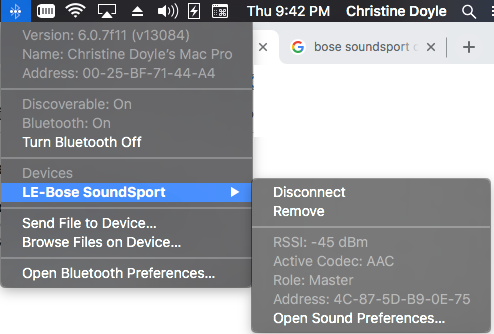Exterior Paint
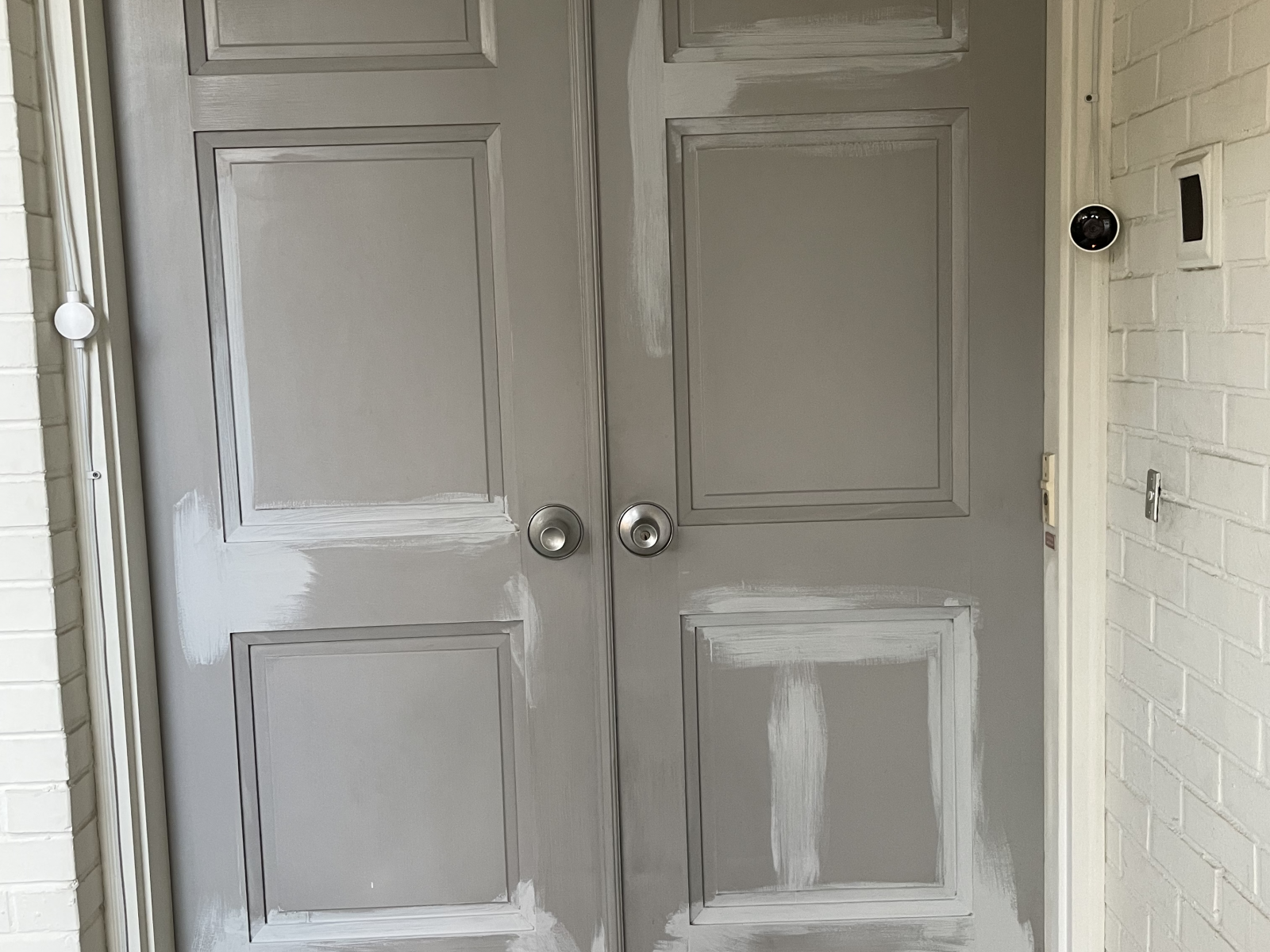
The exterior of mom’s house hadn’t been painted in at least 15 years. The exterior of our house was painted during the remodel, 15 years ago. Both needed some work. I contacted our general contractor from the remodel, and we ultimately selected Lance Cole Painting. Lance came out, took a look at the property, figured out how much prep work it would need (a lot), and then started at the end of August.
Power washing came first. Sanding and repairing as necessary. Priming again. We didn’t start the actual paint job until the 4th day.
We are very happy with the work, and certainly recommend Lance and his team.

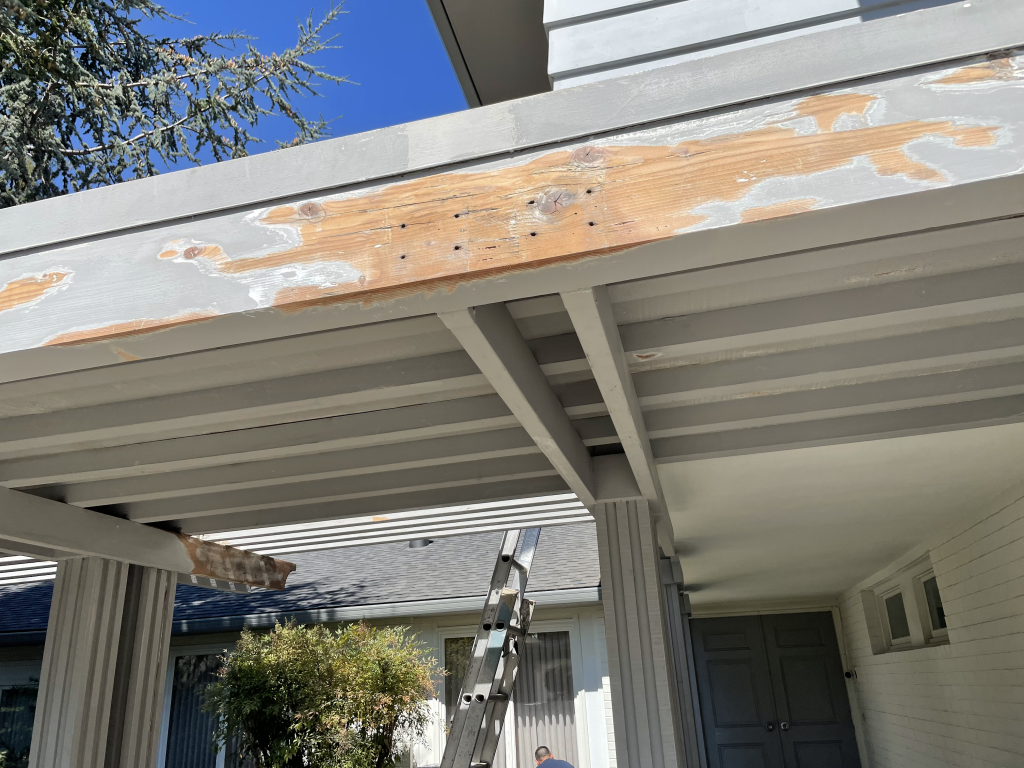
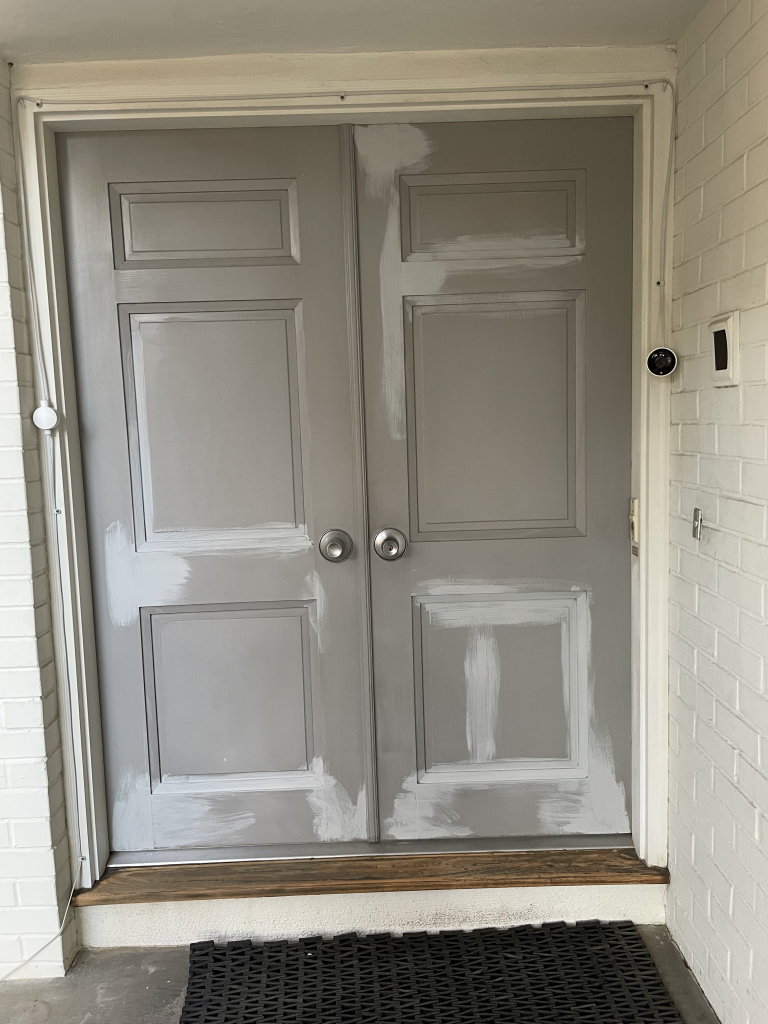
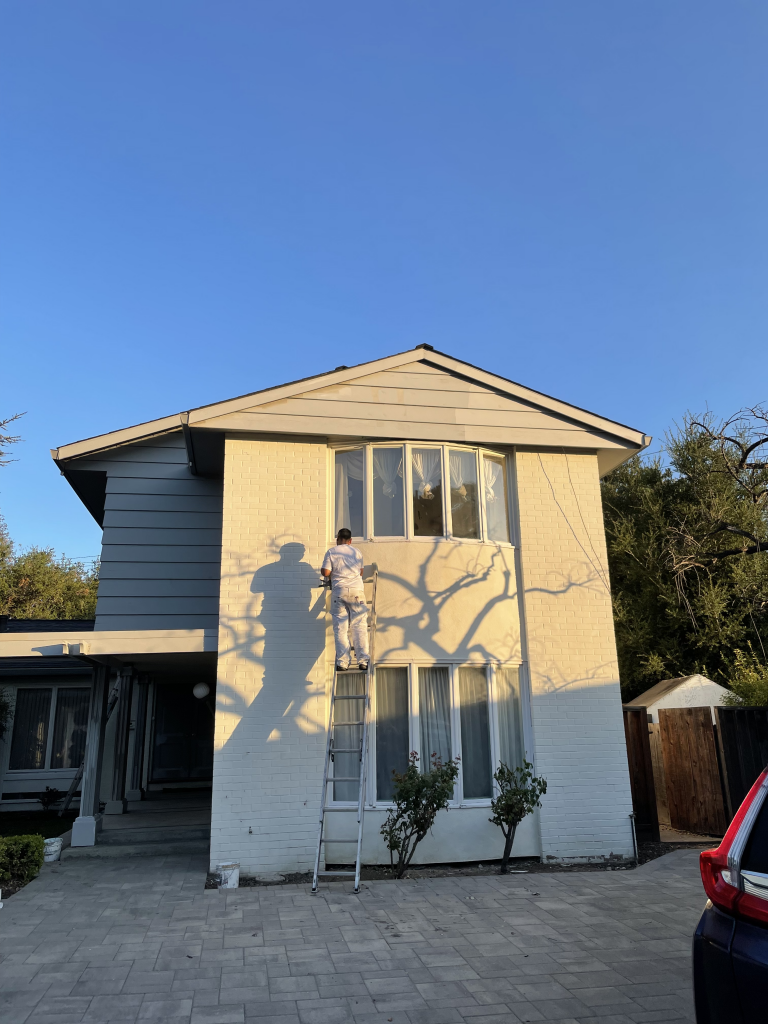
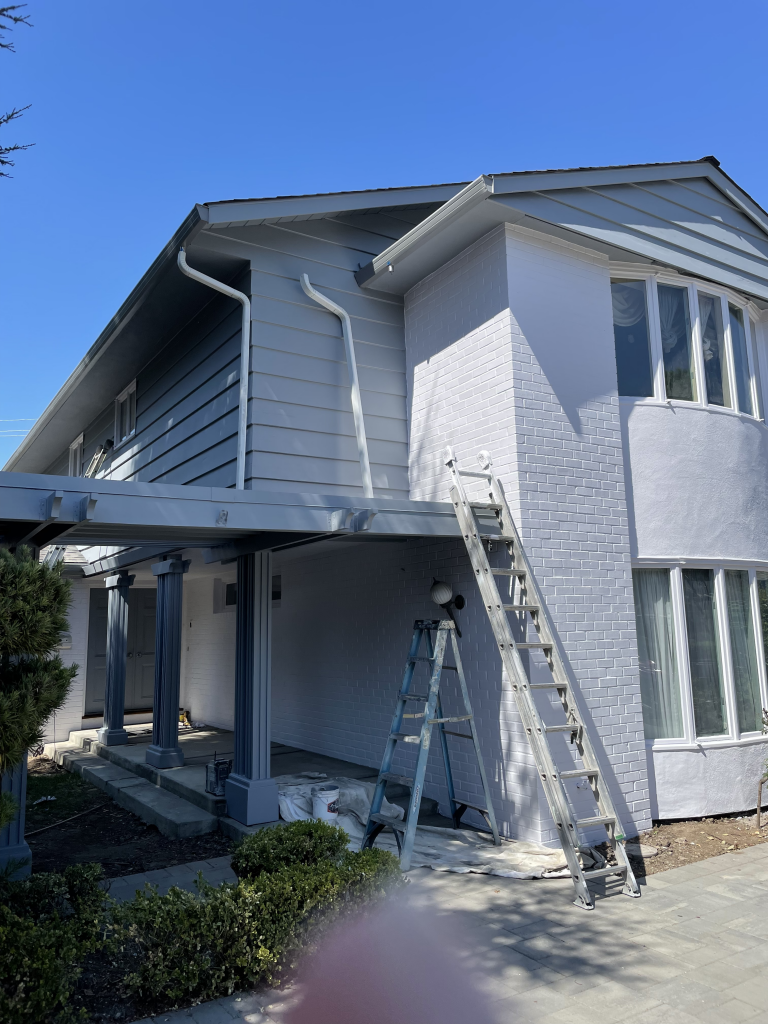
References for Biologics & Anesthesia
These are the references for a presentation about Biologics, Anesthesia, and Critical Care.
Agarwal K, Yousaf N, Morganstein D. Glucocorticoid use and complications following immune checkpoint inhibitor use in melanoma. Clin Med (Lond). 2020 Mar;20(2):163–8. https://www.ncbi.nlm.nih.gov/pmc/articles/PMC7081795/
Billmeier U, Dieterich W, Neurath MF, Atreya R. Molecular mechanism of action of anti-tumor necrosis factor antibodies in inflammatory bowel diseases. World Journal of Gastroenterology. 2016 Nov 14;22(42):9300–13. https://www.wjgnet.com/1007-9327/full/v22/i42/9300.htm
Brahmer JR, Lacchetti C, Schneider BJ, Atkins MB, Brassil KJ, Caterino JM, et al. Management of Immune-Related Adverse Events in Patients Treated With Immune Checkpoint Inhibitor Therapy: American Society of Clinical Oncology Clinical Practice Guideline. JCO. 2018 Jun 10;36(17):1714–68.
https://ascopubs.org/doi/10.1200/JCO.2017.77.6385
Chaar M, Kamta J, Ait-Oudhia S. Mechanisms, monitoring, and management of tyrosine kinase inhibitors-associated cardiovascular toxicities [Internet]. OncoTargets and Therapy. 2018 [cited 2021 Apr 25]. Available from: https://www.dovepress.com/mechanisms-monitoring-and-management-of-tyrosine-kinase-inhibitors-ass-peer-reviewed-fulltext-article-OTT
Chhabra N, Kennedy J. A Review of Cancer Immunotherapy Toxicity: Immune Checkpoint Inhibitors. J Med Toxicol [Internet]. 2021 Apr 7 [cited 2021 Apr 25]; https://doi.org/10.1007/s13181-021-00833-8
Crisci S, Di Francia R, Mele S, Vitale P, Ronga G, De Filippi R, et al. Overview of Targeted Drugs for Mature B-Cell Non-hodgkin Lymphomas. Frontiers in Oncology [Internet]. 2019 [cited 2022 May 13];9. Available from: https://www.frontiersin.org/article/10.3389/fonc.2019.00443
Das S, Ariizumi K, Cruz PD. T-CELL INHIBITORS: A BENCH-TO-BEDSIDE REVIEW. Dermatitis. 2012 Sep;23(5):195–202. https://www.ncbi.nlm.nih.gov/pmc/articles/PMC3485635/
Dumoulin DW, Visser S, Cornelissen R, van Gelder T, Vansteenkiste J, von der Thusen J, et al. Renal Toxicity From Pemetrexed and Pembrolizumab in the Era of Combination Therapy in Patients With Metastatic Nonsquamous Cell NSCLC. Journal of Thoracic Oncology. 2020 Sep 1;15(9):1472–83. https://www.sciencedirect.com/science/article/pii/S1556086420303361
Elias AW, Kasi PM, Stauffer JA, Thiel DD, Colibaseanu DT, Mody K, et al. The Feasibility and Safety of Surgery in Patients Receiving Immune Checkpoint Inhibitors: A Retrospective Study. Front Oncol [Internet]. 2017 Jun 12 [cited 2021 Apr 28];7. Available from: https://www.ncbi.nlm.nih.gov/pmc/articles/PMC5466999/
Fragulidis G, Pantiora E, Michalaki V, Kontis E, Primetis E, Vezakis A, et al. Immune-related intestinal pseudo-obstruction associated with nivolumab treatment in a lung cancer patient. J Oncol Pharm Pract. 2019 Mar;25(2):487–91.
Gutierrez C, McEvoy C, Munshi L, Stephens RS, Detsky ME, Nates JL, et al. Critical Care Management of Toxicities Associated With Targeted Agents and Immunotherapies for Cancer: Critical Care Medicine. 2020 Jan;48(1):10–21. http://journals.lww.com/00003246-202001000-00003
Helmink BA, Roland CL, Kiernan CM, Wargo JA. Toxicity of Immune Checkpoint Inhibitors: Considerations for the Surgeon. Ann Surg Oncol. 2020 May 1;27(5):1533–45. https://doi.org/10.1245/s10434-019-08183-0
Ibrahimi S, Machiorlatti M, Vesely SK, Malla M, Modhia F, Jones SA, et al. Incidence of Vascular Thromboembolic Events in Patients Receiving Immunotherapy: A Single Institution Experience. Blood. 2017 Dec 7;130(Supplement 1):4864–4864. https://doi.org/10.1182/blood.V130.Suppl_1.4864.4864
Joseph A, Simonaggio A, Stoclin A, Vieillard-Baron A, Geri G, Oudard S, et al. Immune-related adverse events: a retrospective look into the future of oncology in the intensive care unit. Annals of Intensive Care. 2020 Oct 16;10(1):143. https://doi.org/10.1186/s13613-020-00761-w
Kounis NG. Coronary Hypersensitivity Disorder: The Kounis Syndrome. Clinical Therapeutics. 2013 May 1;35(5):563–71. https://www.clinicaltherapeutics.com/article/S0149-2918(13)00078-7/abstract
Lemiale V, Meert A-P, Vincent F, Darmon M, Bauer PR, Van de Louw A, et al. Severe toxicity from checkpoint protein inhibitors: What intensive care physicians need to know? Ann Intensive Care. 2019 Feb 1;9(1):25. https://doi.org/10.1186/s13613-019-0487-x
Lewis AL, Chaft J, Girotra M, Fischer GW. Immune checkpoint inhibitors: a narrative review of considerations for the anaesthesiologist. British Journal of Anaesthesia. 2020 Mar 1;124(3):251–60. https://www.bjanaesthesia.org.uk/article/S0007-0912(19)30972-9/abstract
Liu MM, Reidy AB, Saatee S, Collard CD. Perioperative Steroid Management: Approaches Based on Current Evidence. Anesthesiology. 2017 Jul 1;127(1):166–72. https://doi.org/10.1097/ALN.0000000000001659
Longoria TC, Tewari KS. Evaluation of the pharmacokinetics and metabolism of pembrolizumab in the treatment of melanoma. Expert Opin Drug Metab Toxicol. 2016 Oct;12(10):1247–53. https://www.ncbi.nlm.nih.gov/pmc/articles/PMC5613934/
Martins F, Sofiya L, Sykiotis GP, Lamine F, Maillard M, Fraga M, et al. Adverse effects of immune-checkpoint inhibitors: epidemiology, management and surveillance. Nature Reviews Clinical Oncology. 2019 Sep;16(9):563–80. https://www.nature.com/articles/s41571-019-0218-0
Mays AC, Yarlagadda B, Achim V, Jackson R, Pipkorn P, Huang AT, et al. Examining the relationship of immunotherapy and wound complications following flap reconstruction in patients with head and neck cancer. Head & Neck. 2021;43(5):1509–20. https://onlinelibrary.wiley.com/doi/abs/10.1002/hed.26601
Puzanov I, Diab A, Abdallah K, Bingham CO, on behalf of the Society for Immunotherapy of Cancer Toxicity Management Working Group, Brogdon C, et al. Managing toxicities associated with immune checkpoint inhibitors: consensus recommendations from the Society for Immunotherapy of Cancer (SITC) Toxicity Management Working Group. j immunotherapy cancer. 2017 Dec;5(1):95. https://jitc.bmj.com/lookup/doi/10.1186/s40425-017-0300-z
Rezaieyazdi Z, Sahebari M, Khodashahi M. Preoperative Evaluation and Management of Patients Receiving Biologic Therapies. Arch Bone Jt Surg. 2019 May;7(3):220–8. https://www.ncbi.nlm.nih.gov/pmc/articles/PMC6578481/
Salinas C, Renner A, Rojas C, Samtani S, Burotto M. Primary Adrenal Insufficiency during Immune Checkpoint Inhibitor Treatment: Case Reports and Review of the Literature. CRO. 2020;13(2):621–6. https://www.karger.com/Article/FullText/507652
Simoneaux R, Shafer SL. Immune Checkpoint Inhibitor Therapies in Cancer Treatment. ASA Monitor. 2022 Sep;86(9):1-13.
https://doi.org/10.1097/01.ASM.0000874188.34355.5e
Spiers L, Coupe N, Payne M. Toxicities associated with checkpoint inhibitors—an overview. Rheumatology. 2019 Dec 1;58(Supplement_7):vii7–16. https://doi.org/10.1093/rheumatology/kez418
Wang DY, Salem J-E, Cohen JV, Chandra S, Menzer C, Ye F, et al. Fatal Toxic Effects Associated With Immune Checkpoint Inhibitors: A Systematic Review and Meta-analysis. JAMA Oncol. 2018 Dec 1;4(12):1721. http://oncology.jamanetwork.com/article.aspx?doi=10.1001/jamaoncol.2018.3923
Supportive Care and Treatment Related Issues [Internet]. ASCO. [cited 2021 Apr 28]. Available from: https://www.asco.org/research-guidelines/quality-guidelines/guidelines/supportive-care-and-treatment-related-issues
Redoing the driveway
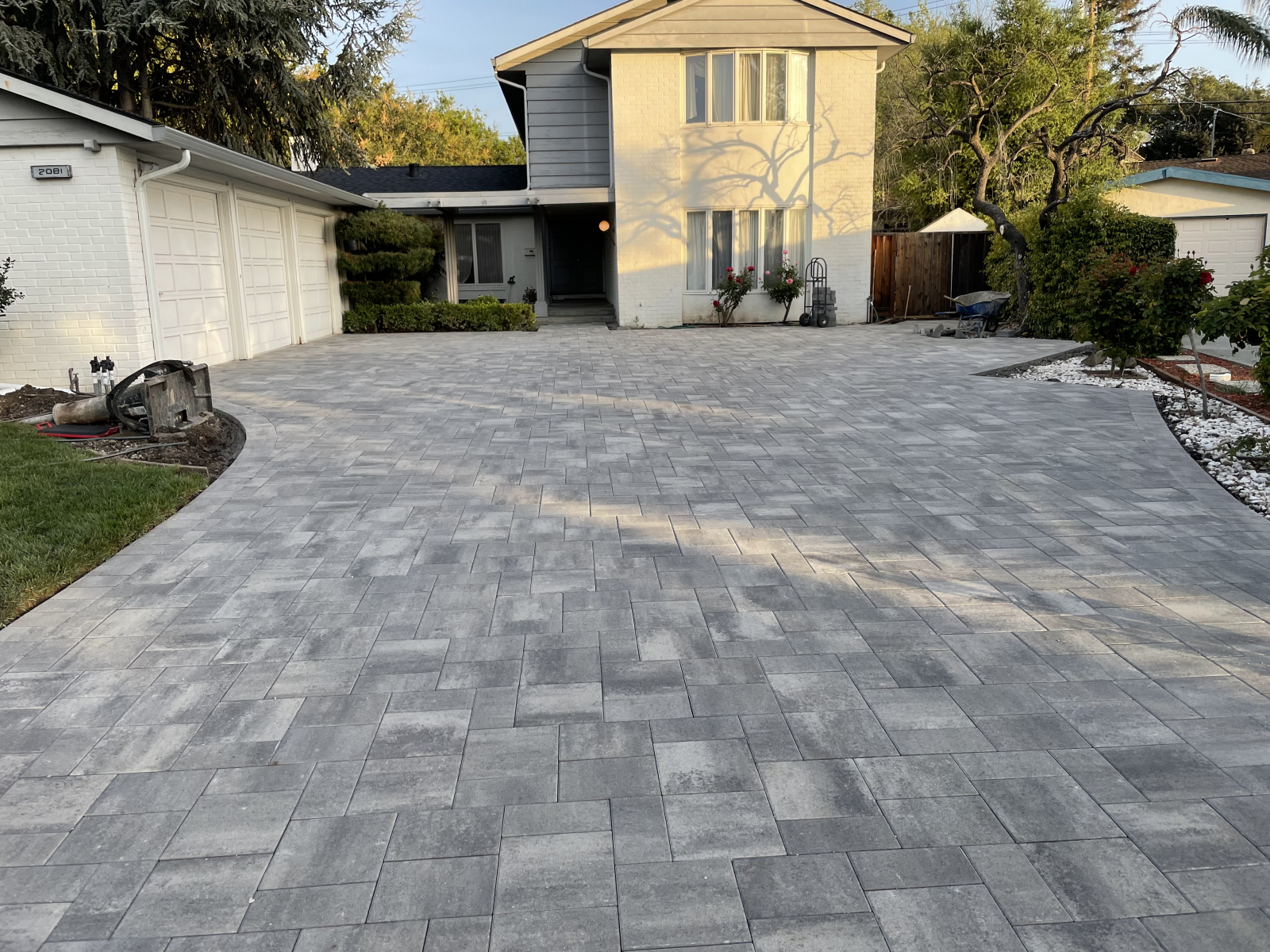
As we worked to fix the sewer, we needed to dig out a portion of the driveway for access. And we realized that there was some sort of leak in an irrigation pipe that went under the driveway. So it became evident that redoing the entire driveway made the most sense. And pavers won out over concrete in part because we could take out a section if necessary in the future without digging everything out.
After talking to a variety of folks for recommendations, getting bids, we opted to go with Saratoga Pavers. They had the paver we wanted to use in the color we wanted, and they had a nice gap in their schedule so we didn’t have a hole in the driveway for too long.
Three videos, condensing 9 hours of work each day into about 1 minute, provide a visual of the process. Then we had to wait 2 days before we could drive on it, to let the sealant cure.
Everything you didn’t want to know about sewers…
We planned mom’s memorial reception a couple of days after her birthday, in October. I was at the ASA meeting in San Diego, when I got a call from a friend about a problem at mom’s… the toilet had backed up as had the bathrub, and it was “raining” in the furnace room in the basement.

We got the plumbers (from Rayne) to clean things out, and add a new clean-out just in front of the house. It took a few days, much of which was just dealing with the office staff to get information about when the crew were coming to work.

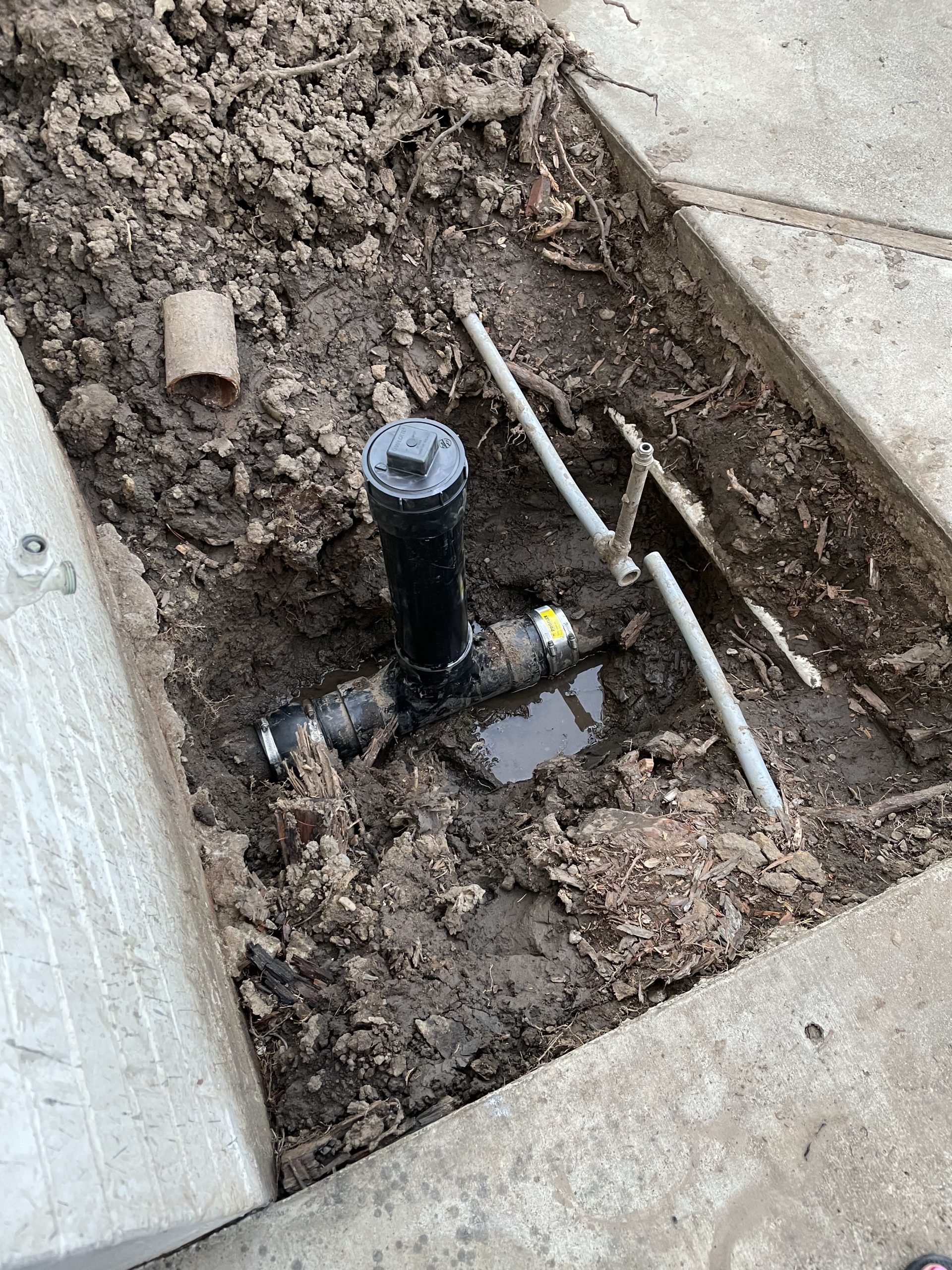
Things were much better… and then it happened again. We realized that the pipes in the basement/furnace room needed to be replaced. So our regular plumber, Dan, did that in early January. Just in time, as the pipes practically fell apart as they were removed.

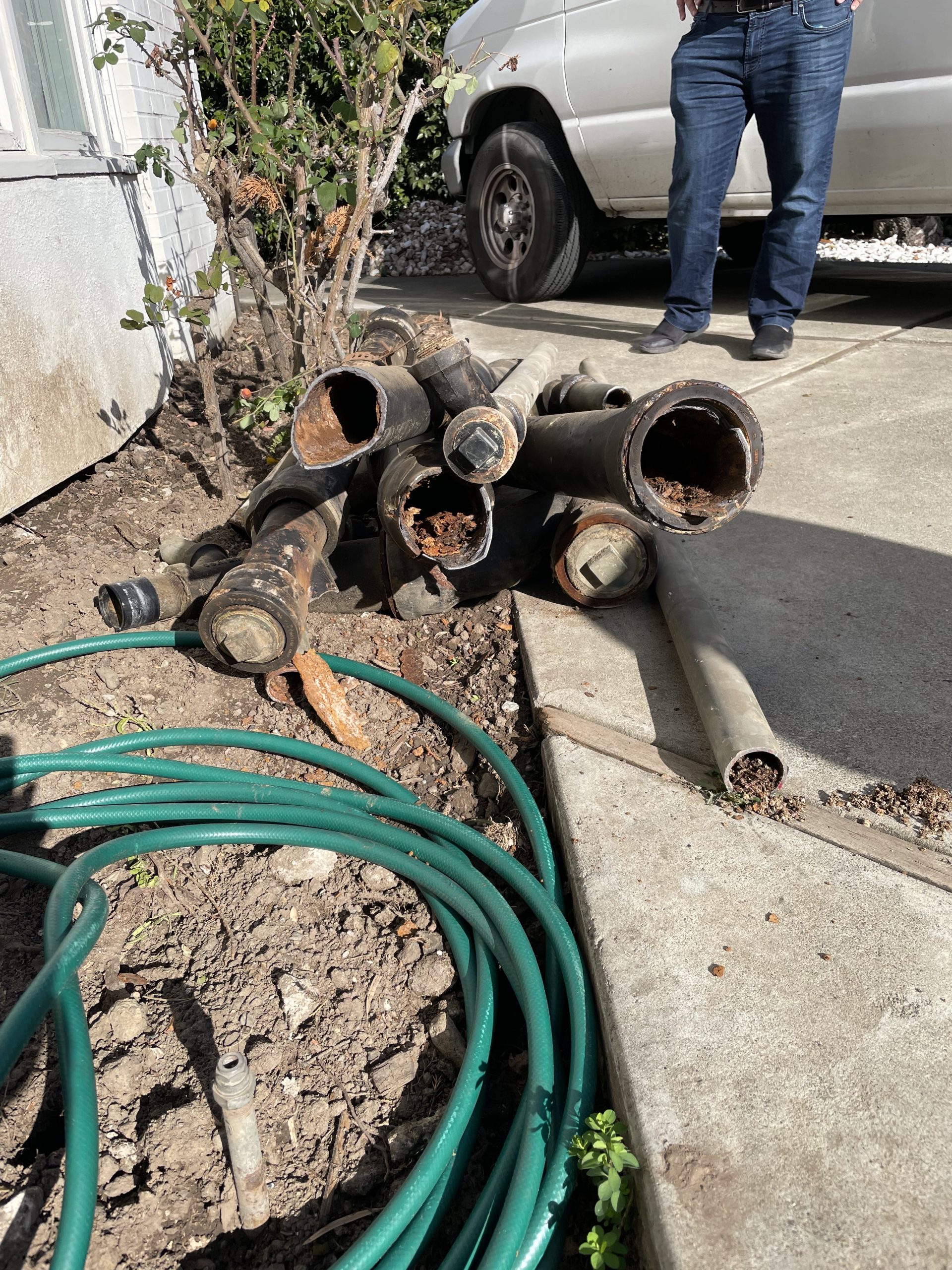
And then it happened a third time, while we were once again out of town. The guy from Rayne said that we should ‘scope the line — which we had asked them to do back in October. They showed up early, so we couldn’t see what they saw. We had to call repeatedly to get both the video and the bill. But once we had it, we could see that there were areas where the pipe was no longer straight. It could be what’s called a belly, where there is essentially a bend in the pipe, or what’s called channeling, where the bottom of the pipe is eroded away. In either case, you need to do significant work to fix it.
We weren’t sure if we would have to trench the entire line (60′ under the concrete) or could use one of the various techniques that put a new pipe down through the old one and “burst it” from the inside to keep the necessary size. Dan recommended we work with Crown Plumbing.
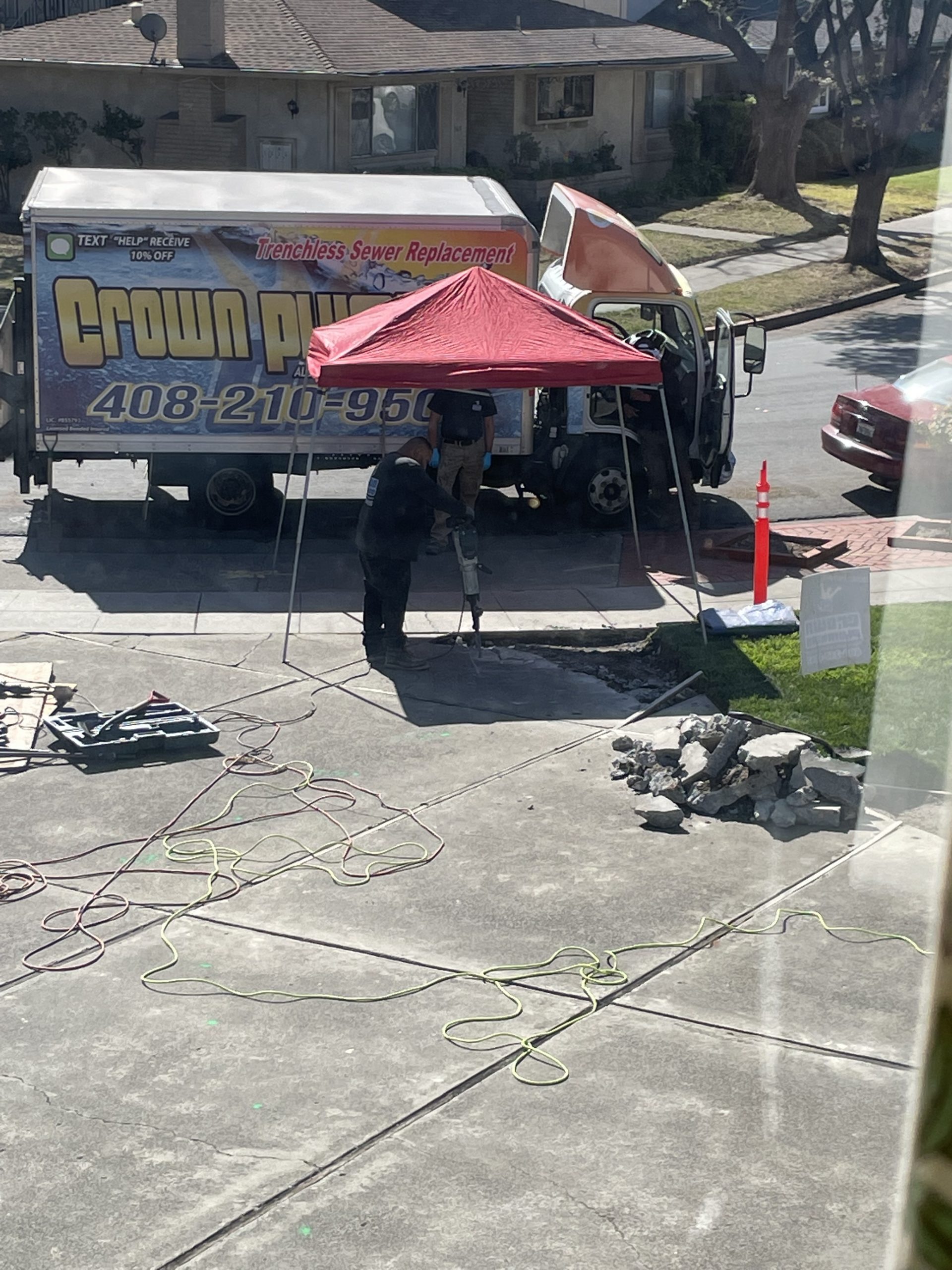
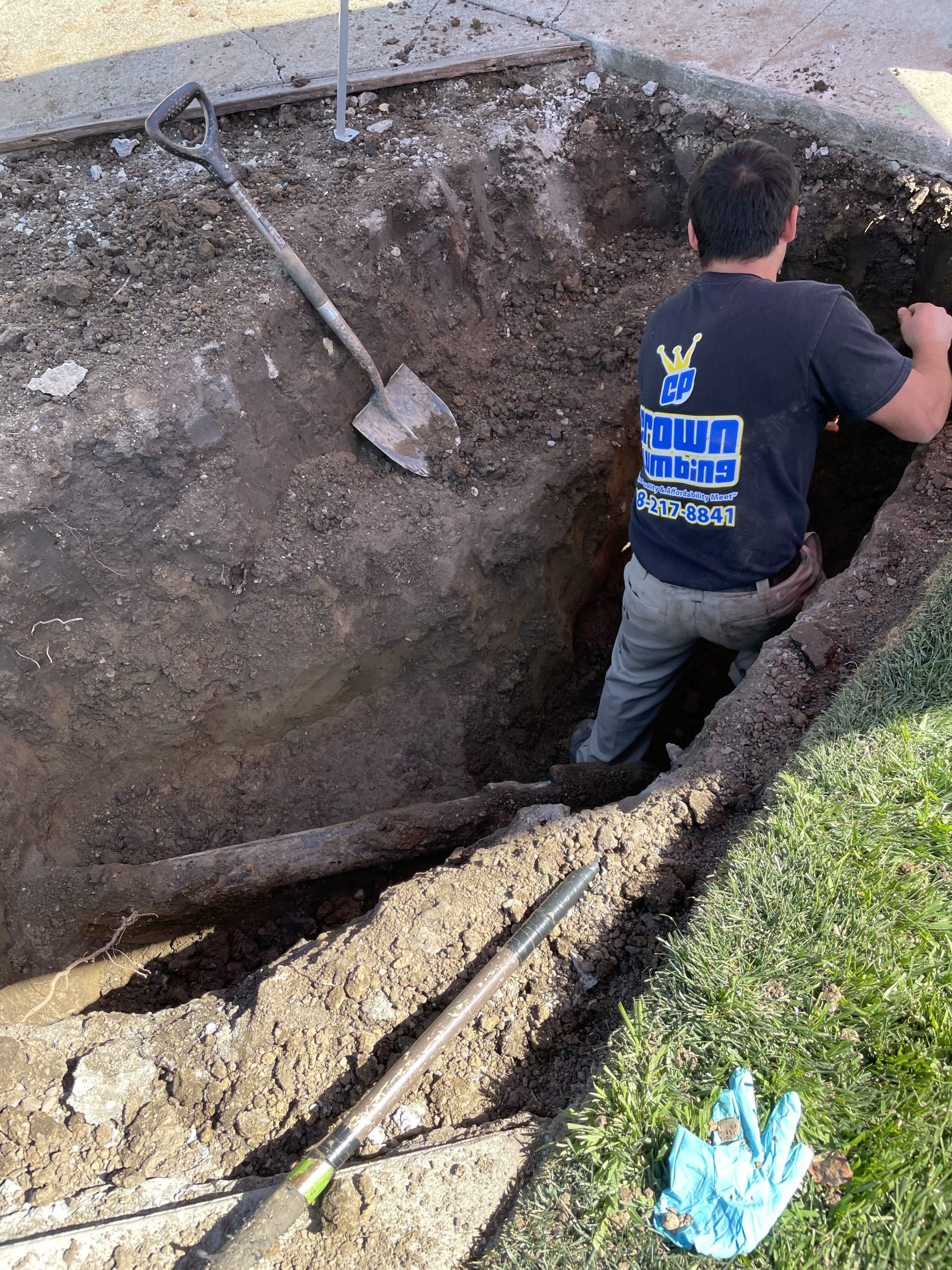

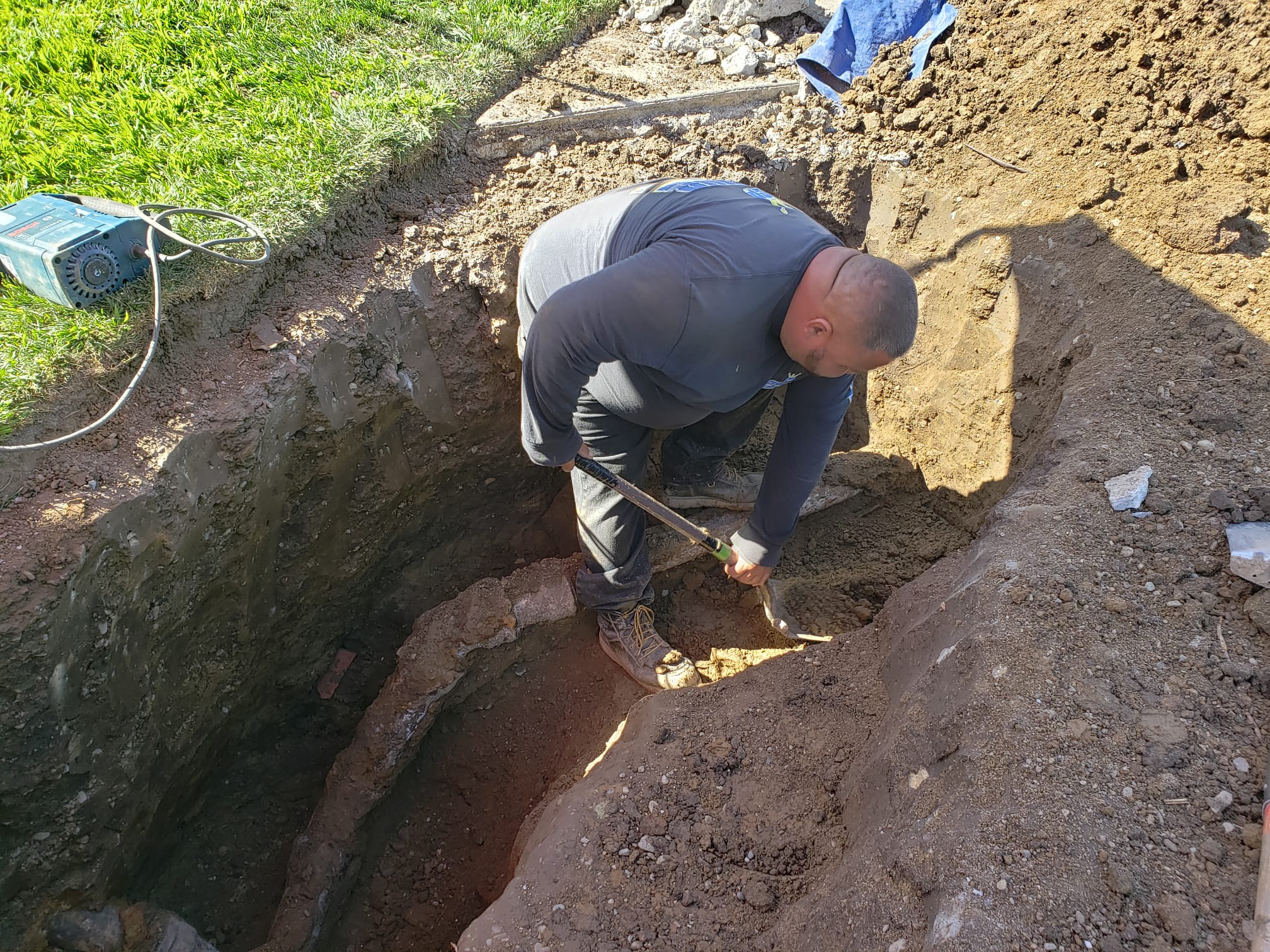
It took them a full day to dig everything out enough to be able to do the work. Crown came back a couple of days later to finish things off. They have a cool device that helps to pull the new pipe down through the old and then “burst” the old pipe so that the new is the same size as the original. I can’t explain more than that – but it’s sort of like what we do when we put in stents in arteries. That process took only about 3 hours. We tested, no leaks, so we are good to use all the plumbing fixtures in the house. Of course, we still have to wait for the formal inspection before we can fill in the hole again, and then will have to deal with the driveway repairs.

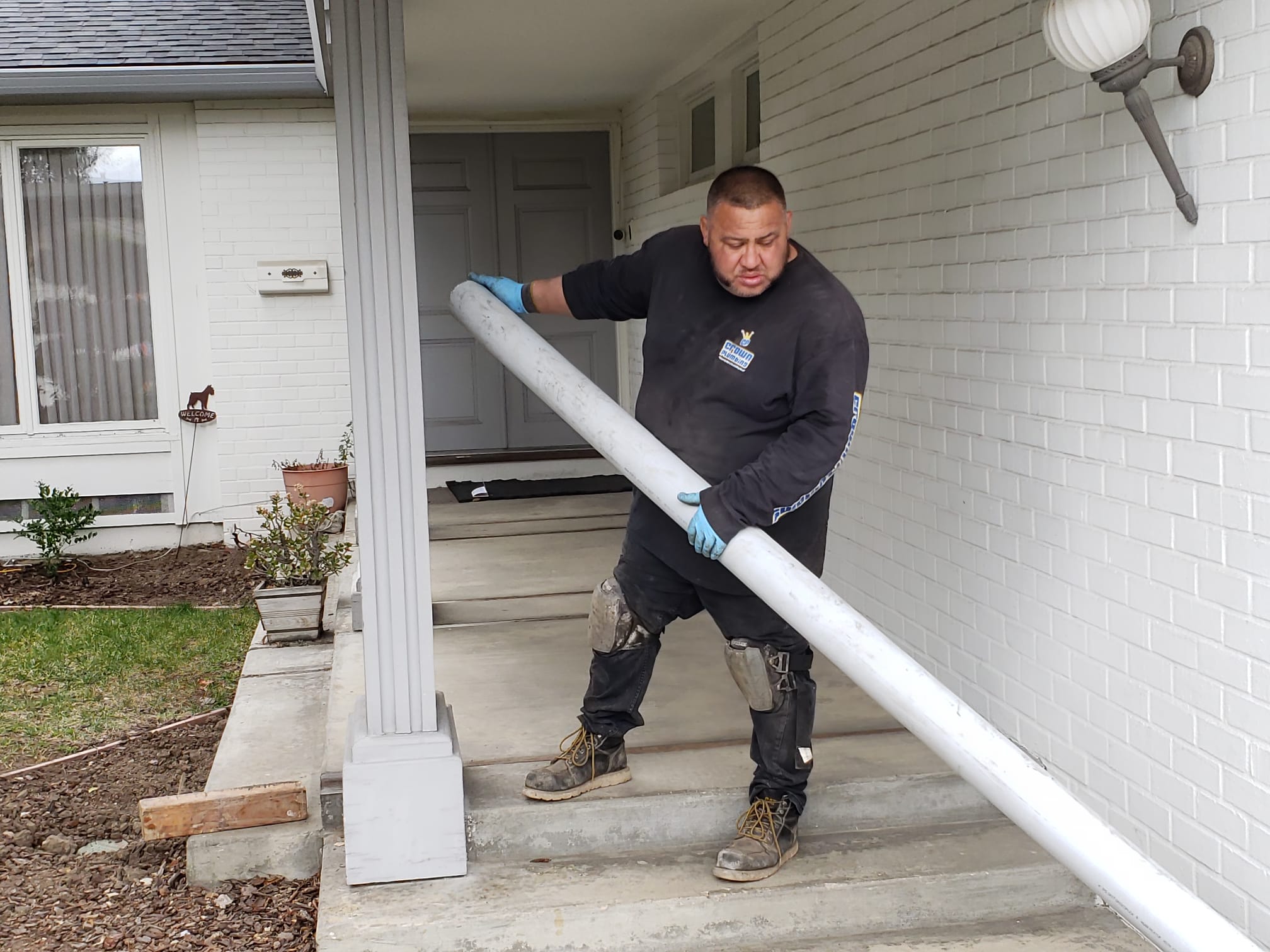


References for the Green Team’s Project Management Presentation
If you’re interested in a list of references about Project Management and Addressing EHR burden on clinicians and staff, you’ve come to the right place.
As a member of the “Green Team” for the Project Management course offered by OHSU’s Department of Medical Informatics and Clinical Epidemiology (DMICE), we wanted to be able to share the complete references with folks, so here they are.
- Adler-Milstein J, Zhao W, Willard-Grace R, Knox M, Grumbach K. Electronic health records and burnout: Time spent on the electronic health record after hours and message volume associated with exhaustion but not with cynicism among primary care clinicians. Journal of the American Medical Informatics Association. 2020 Apr 1;27(4):531–8. 10.1093/jamia/ocz220
- AHRQ. Module 10. Academic Detailing as a Quality Improvement Tool [Internet]. 2013 [cited 2022 Feb 19]. Available from: https://www.ahrq.gov/ncepcr/tools/pf-handbook/mod10.html
- ANIA. The Six Domains of Burden: A Conceptual Framework to Address the Burden of Documentation in the Electronic Health Record [Internet]. American Nursing Informatics Association. 2020 [cited 2022 Feb 18]. Available from: https://www.ania.org/publications/position-statements
- Ashton M. Getting Rid of Stupid Stuff. New England Journal of Medicine. 2018 Nov 8;379(19):1789–91. https://doi.org/10.1056/NEJMp1809698
- Atasoy H, Greenwood BN, McCullough JS. The Digitization of Patient Care: A Review of the Effects of Electronic Health Records on Health Care Quality and Utilization. Annu Rev Public Health. 2019 Apr 1;40(1):487–500. http://10.1146/annurev-publhealth-040218-044206
- Avorn J. Academic Detailing: “Marketing” the Best Evidence to Clinicians. JAMA. 2017 Jan 24;317(4):361. 10.1001/jama.2016.16036
- Brooke J. SUS: A Retrospective. JUS – The Journal of Usability Studies. 2013 Feb 7;8(2):29–40. https://uxpajournal.org/sus-a-retrospective/
- Dymek C, Kim B, Melton GB, Payne TH, Singh H, Hsiao C-J. Building the evidence-base to reduce electronic health record-related clinician burden. Journal of the American Medical Informatics Association. 2021 May;28(5). https://doi.org/10.1093/jamia/ocaa238
- Ford EW, Menachemi N, Peterson LT, Huerta TR. Resistance Is Futile: But It Is Slowing the Pace of EHR Adoption Nonetheless. Journal of the American Medical Informatics Association. 2009 May 1;16(3):274–81. 10.1197/jamia.M3042
- Gettinger A, Mason TA. Final Report Delivers a Strategy to Reduce EHR Burden [Internet]. Health IT Buzz. 2020 [cited 2022 Feb 27]. Available from: https://www.healthit.gov/buzz-blog/health-it/final-report-delivers-a-strategy-to-reduce-ehr-burden
- HealthIT. Strategy on Reducing Burden Relating to the Use of Health IT and EHRs | HealthIT.gov [Internet]. 2020 [cited 2022 Feb 7]. Available from: https://www.healthit.gov/topic/usability-and-provider-burden/strategy-reducing-burden-relating-use-health-it-and-ehrs
- Hecht J. The future of electronic health records. Nature. 2019 Sep 25;573(7775):S114–6.
- IHI. Failure Modes and Effects Analysis (FMEA) Tool | IHI – Institute for Healthcare Improvement [Internet]. [cited 2022 Feb 26]. Available from: http://www.ihi.org:80/resources/Pages/Tools/FailureModesandEffectsAnalysisTool.aspx
- ISO. ISO 9241-11:2018(en), Ergonomics of human-system interaction — Part 11: Usability: Definitions and concepts [Internet]. [cited 2022 Mar 2]. Available from: https://www.iso.org/obp/ui/#iso:std:iso:9241:-11:ed-2:v1:en
- ISO 9241-210:2019 [Internet]. ISO. [cited 2022 Mar 2]. Available from: https://www.iso.org/cms/render/live/en/sites/isoorg/contents/data/standard/07/75/77520.html
- Jeffery J. Making Sense of EHR Satisfaction [Internet]. 2018 [cited 2022 Feb 28]. Available from: https://klasresearch.com/article/making-sense-of-ehr-satisfaction/453
- Landry MD, Sibbald WJ. Changing physician behavior: A review of patient safety in critical care medicine. Journal of Critical Care. 2002 Jun 1;17(2):138–45. 10.1053/jcrc.2002.33940
- Liu H-C, Zhang L-J, Ping Y-J, Wang L. Failure mode and effects analysis for proactive healthcare risk evaluation: A systematic literature review. Journal of Evaluation in Clinical Practice. 2020;26(4):1320–37. 10.1111/jep.13317
- NASA. TLX @ NASA Ames – Home [Internet]. [cited 2021 Nov 21]. Available from: https://humansystems.arc.nasa.gov/groups/tlx/
- NIST. Usability Standards [Internet]. NIST. 2021 [cited 2022 Mar 2]. Available from: https://www.nist.gov/programs-projects/usability-standards
- Reichheld FF. The One Number You Need to Grow. Harvard Business Review [Internet]. 2003 Dec 1 [cited 2022 Feb 13]; Available from: https://hbr.org/2003/12/the-one-number-you-need-to-grow
- Reichheld F, Darnell D, Burns M. Net Promoter 3.0. Harvard Business Review [Internet]. 2021 Nov 1 [cited 2022 Feb 13]; Available from: https://hbr.org/2021/11/net-promoter-3-0
- Sieja A, Markley K, Pell J, Gonzalez C, Redig B, Kneeland P, et al. Optimization Sprints: Improving Clinician Satisfaction and Teamwork by Rapidly Reducing Electronic Health Record Burden. Mayo Clinic Proceedings. 2019 May;94(5):793–802. 10.1016/j.mayocp.2018.08.036
- Tewfik G. Proactive Perioperative Risk Analysis: Use of Failure Mode and Effects Analysis (FMEA) [Internet]. Anesthesia Patient Safety Foundation. [cited 2022 Feb 27]. Available from: https://www.apsf.org/article/proactive-perioperative-risk-analysis-use-of-failure-mode-and-effects-analysis-fmea/
- United States. Health Information Technology for Economic and Clinical Health (HITECH) Act, Public Law 111-115, 123 Stat. 226, 2009.
- United States. Patient Protection and Affordable Care Act (PPACA). Public Law 111–148, 124 Stat. 119, 2010.
- User-Centered Design Basics | Usability.gov [Internet]. Department of Health and Human Services; 2017 [cited 2022 Feb 23]. Available from: https://www.usability.gov/what-and-why/user-centered-design.html
- Wachter RM. The digital doctor: hope, hype, and harm at the dawn of medicine’s computer age. New York: McGraw-Hill Education; 2017. 330 p. (Business classics).
- WHO. Burn-out an “occupational phenomenon”: International Classification of Diseases [Internet]. [cited 2022 Mar 2]. Available from: https://www.who.int/news/item/28-05-2019-burn-out-an-occupational-phenomenon-international-classification-of-diseases
Revisiting landscape irrigation
Technology has changed since we did the landscaping in 2007, particularly with the ability to control things remotely. I had to replace the controller (timer) at my mom’s when the hard-working device my dad placed well over 20 years ago finally failed. I got a Rainbird, with a WiFi option, so I can see what’s going on at her house. I wanted to do the same thing at our house, both for the WiFi option and because I’d never particularly liked the Rainmaster controller that was put in originally.
I did some research to figure out which model Rainbird I should get, but couldn’t find anyone who would take out the old and install the new. Fortunately, our original irrigation expert came back to San Jose for a big job this spring, and was willing to do the work between his other obligations.
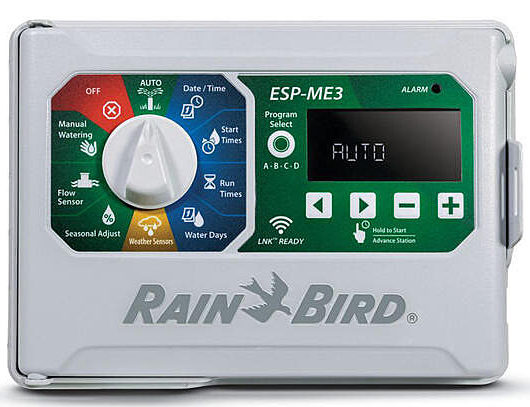
We selected the Rainbird ESP-ME3 series, with the LNK WiFi module, and added a rain sensor. We also added a flow sensor, which can help us determine if a circuit doesn’t shut off, has a leak, etc. After some initial issues with the flow sensor, we got it all settled so that we can track water usage, really important with the current drought. We also put in a “normally off” Master Valve, which will shut off the water when the sprinklers aren’t running, and prevent leaks.
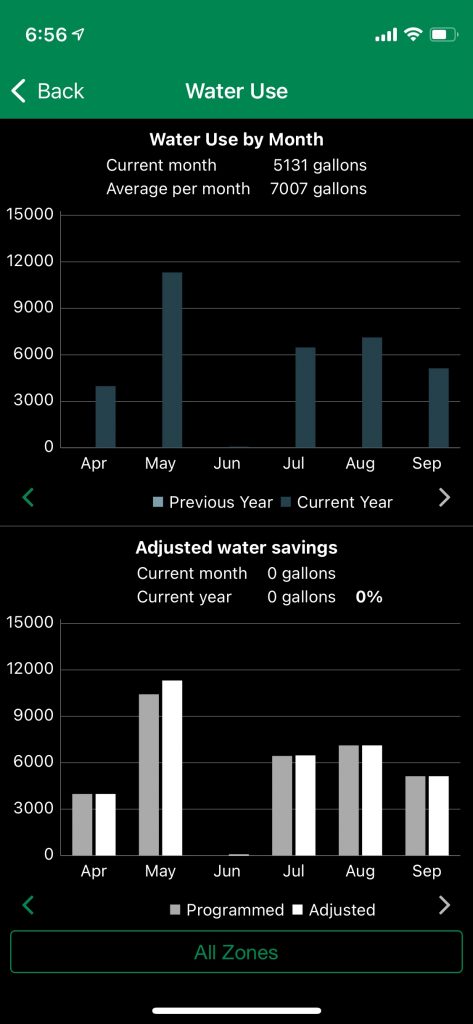
Of course, now I will probably redo mom’s setup so that we can track water usage the same way, not just adjust the programming, etc.
*See also the post Drip Irrigation conversion from 2015.
Upgrading a ceiling fan – DIY is never that simple
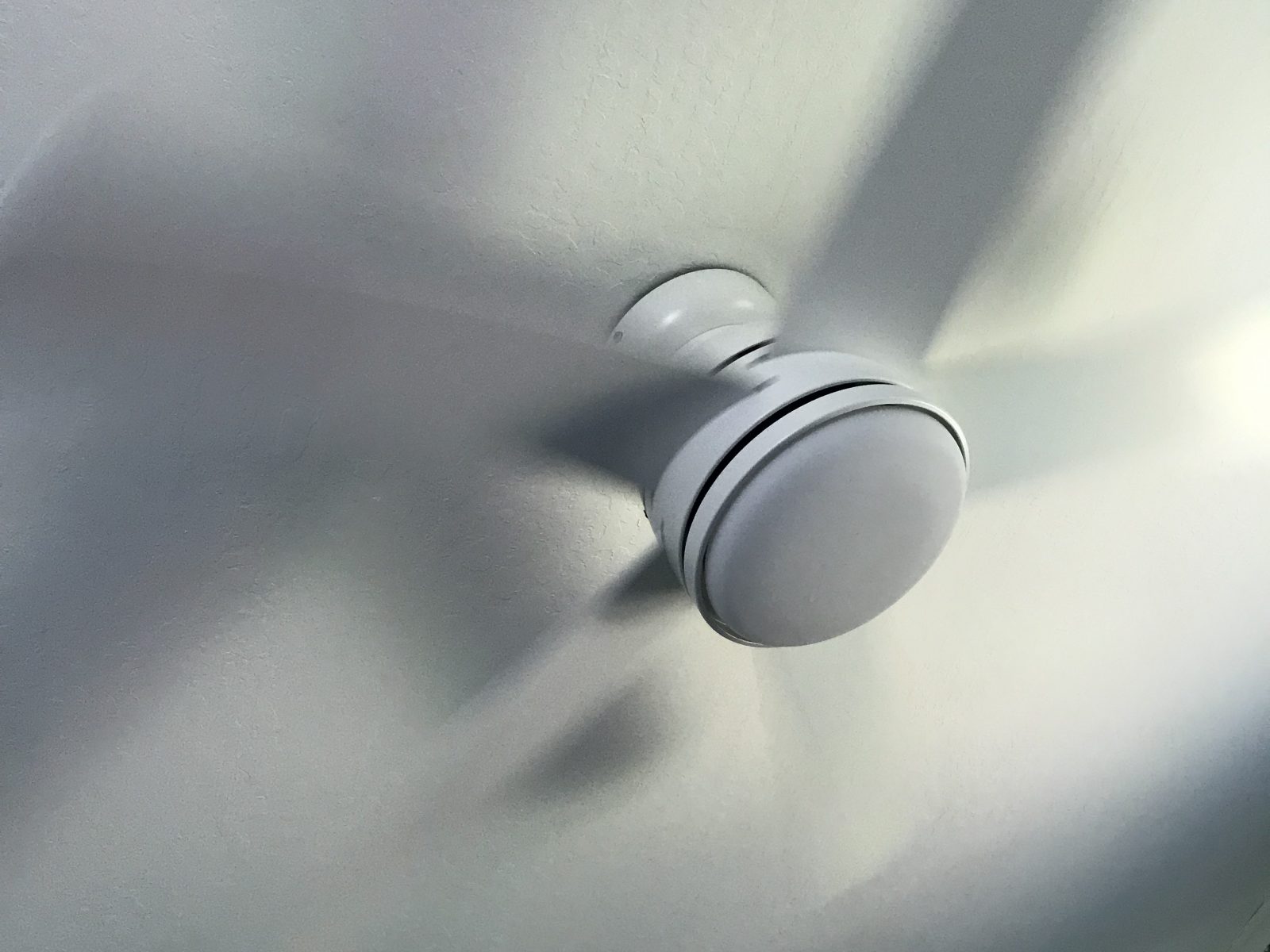
When we first bought the house, we installed a ceiling fan in the kitchen. That fan ended up in my office, and has been really great… but it finally stopped working. Newer devices have options for remote controls, integrate with smart home technology, etc, so it was worth the upgrade.
Step 1: Figure out how to disassemble the existing fan and take it down. Of course, we first put it together and hung it up nearly 20 years ago, so we don’t have the manual any more. Total time: 90 minutes.
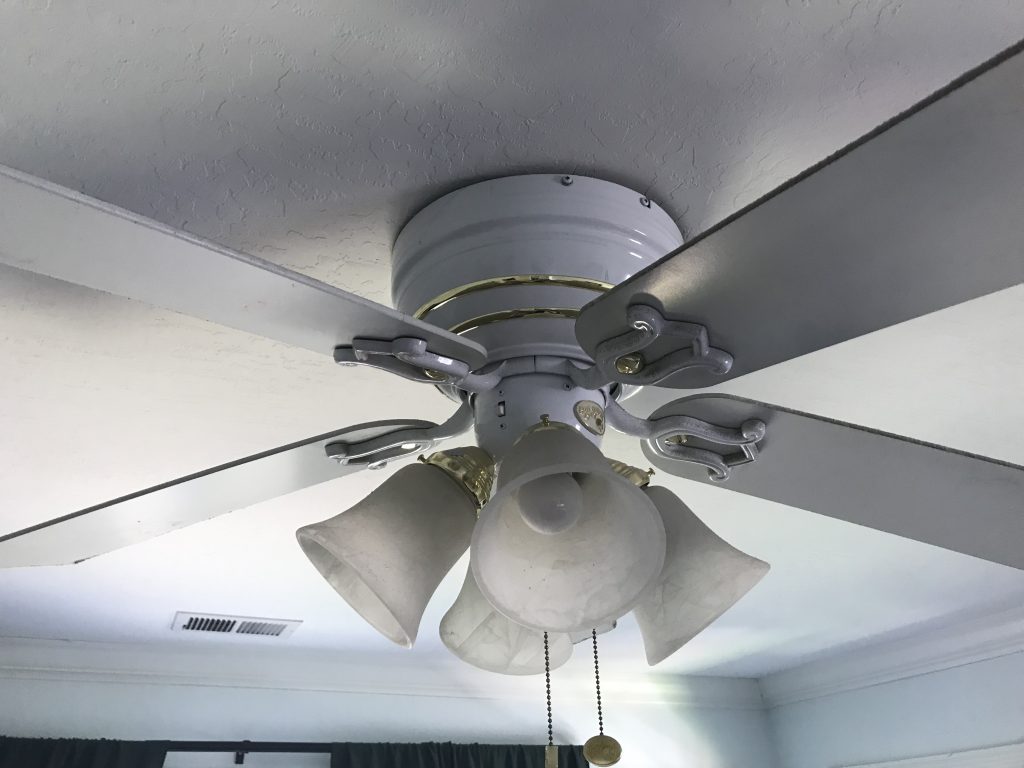
Step 2-A: Swear at the manufacturer who provides you with 3″ long screws, but doesn’t also provide you with the appropriate size and length drill bit*. Regular drill bits in the 9/64″ size are about 2″ long… which potentially leaves you driving in a full inch of that screw by hand (because a drill driver will just strip the head). All done while on a ladder, and working over your head. We tried, but couldn’t get that last half inch screwed into the joist. Take out the first screw before you totally mess up the Philips head. Use the second screw. Do the same. Decide it’s time to quit for the day, while leaving off the circuit breaker.
Step 2-B: go to Home Depot to get the special 12″ long drill bit, and more screws.
Step 2-C: Bend one screw. Remove it. Break one screw. Shift the bracket location and drill a new pilot hole.
Step 2-D: Return to Home Depot, get more screws. Also get a nifty ratchet screwdriver. Hope that I don’t get blisters on my palm from all of this.
Step 2-E: Finally get the mounting bracket installed. Total time for this first part (not counting dinner and sleep): 6 hours.
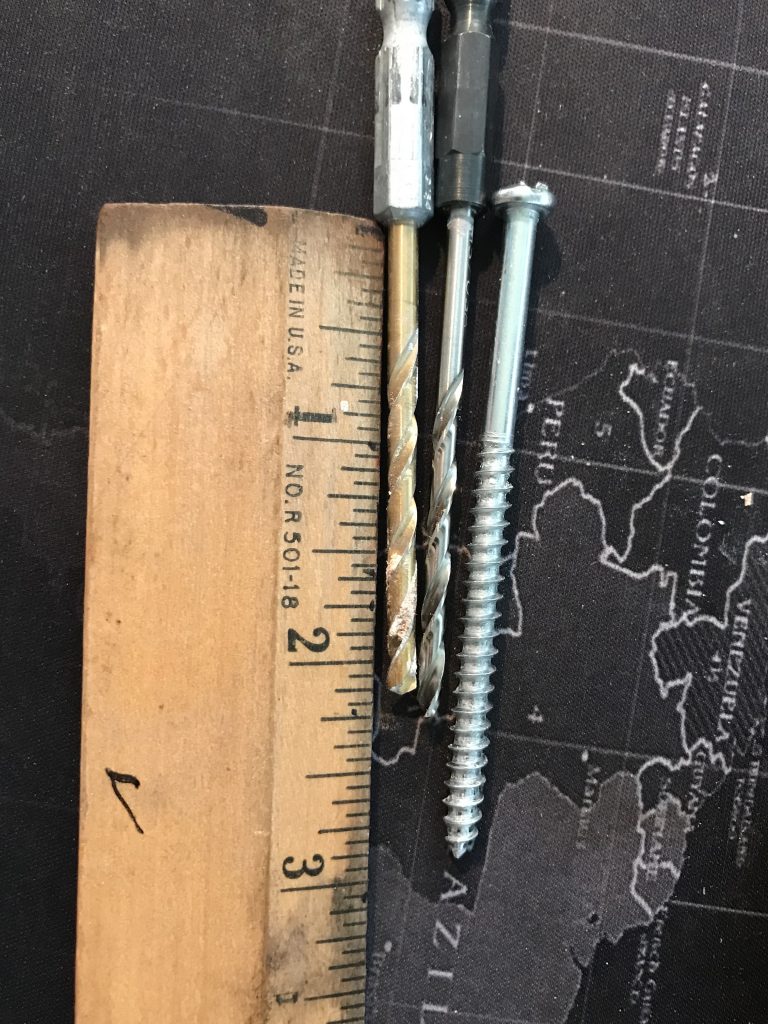
Typical drill bits vs provided screw 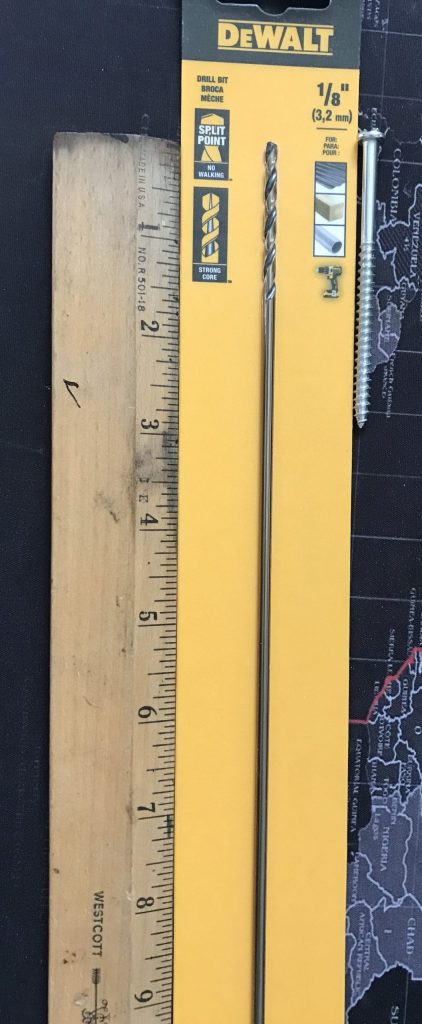
12″ long special drill bit 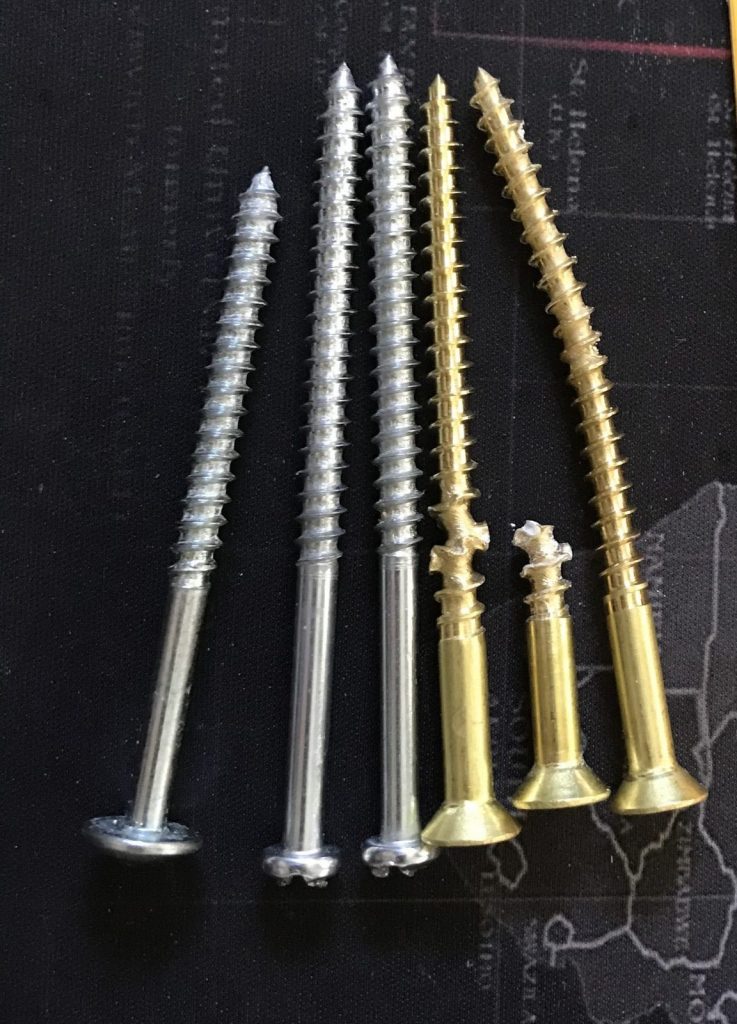
The ones who failed
Step 3: Connect the wiring, mount the central unit. It’s heavy, and plan on two people just to get it onto the posts. Everything else is a one-person job. Mounting the blades is a bit fussy, because the alignment is tricky to see when you’re working above your head. Mount the light brackets, light (LED) and glass cover. Total time: 1 hour. Turn on the circuit breaker, turn on the switch, and viola! New fan works like a dream.
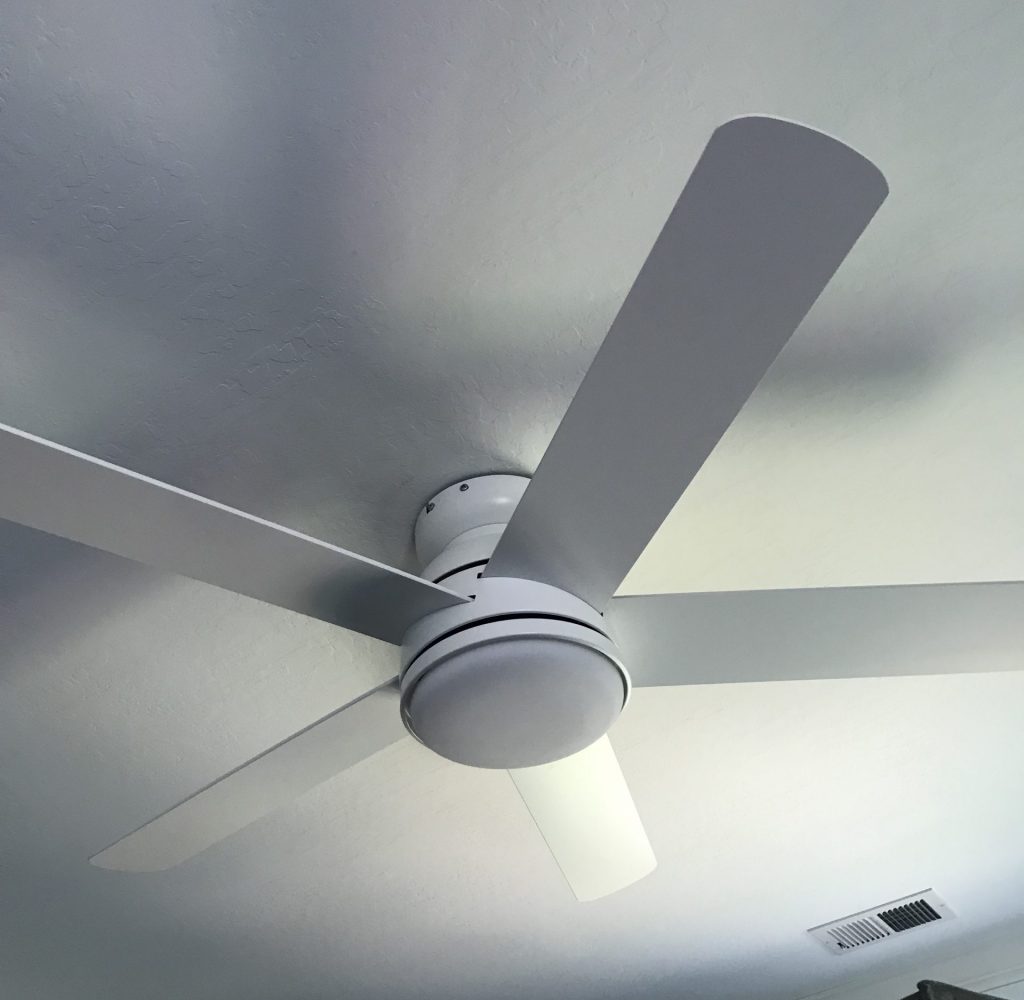
Step 4: Setup the app. SIMPLEconnect is not simple. Apparently, many items in the Internet of Things (IOT) only work with 2.4GHz wifi networks. Your phone (or tablet) needs to be using that network for the setup to be completed. Of course, most of our phones nowadays use the 5GHz networks, so the two won’t talk so you can do the setup. You will get an error saying it’s Unable to Pair, and you have “Inadequate Permission” — which of course doesn’t actually tell you what’s wrong.
We had to rename most of our household network to isolate one device that we could force to stay on 2.4GHz, then “forget” the normal network and then rejoin the network, and then we could set up the app. Once it’s setup, however, you can shift everything back to normal.
See also this article: https://pocketables.com/2018/05/how-to-set-up-that-2-4ghz-device-on-your-dual-ghz-network.html
*See also this post: https://www.monty-doyle.com/?p=1240
Jean Monty Doyle
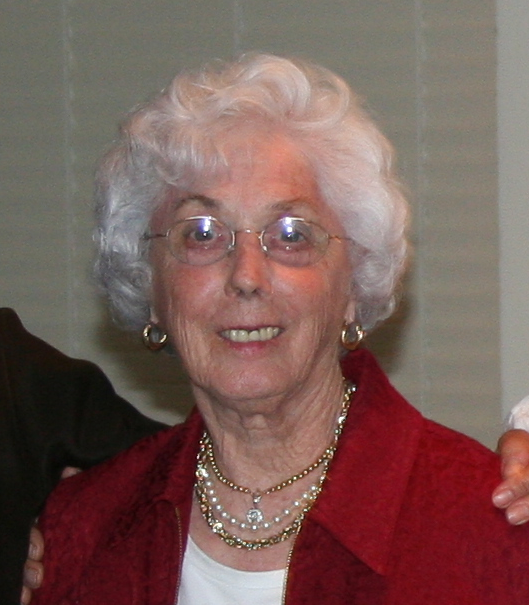
Jean Monty Doyle, age 96, passed away at her home on March 14, 2021. The youngest of six children, she was born in Omaha, Nebraska. The family moved to San Jose when she was three years old, and Jean considered herself a native Californian. Jean was an organizer, a planner, a manager, and a problem solver. She would graciously help you with as much or as little as you needed to solve your problem.
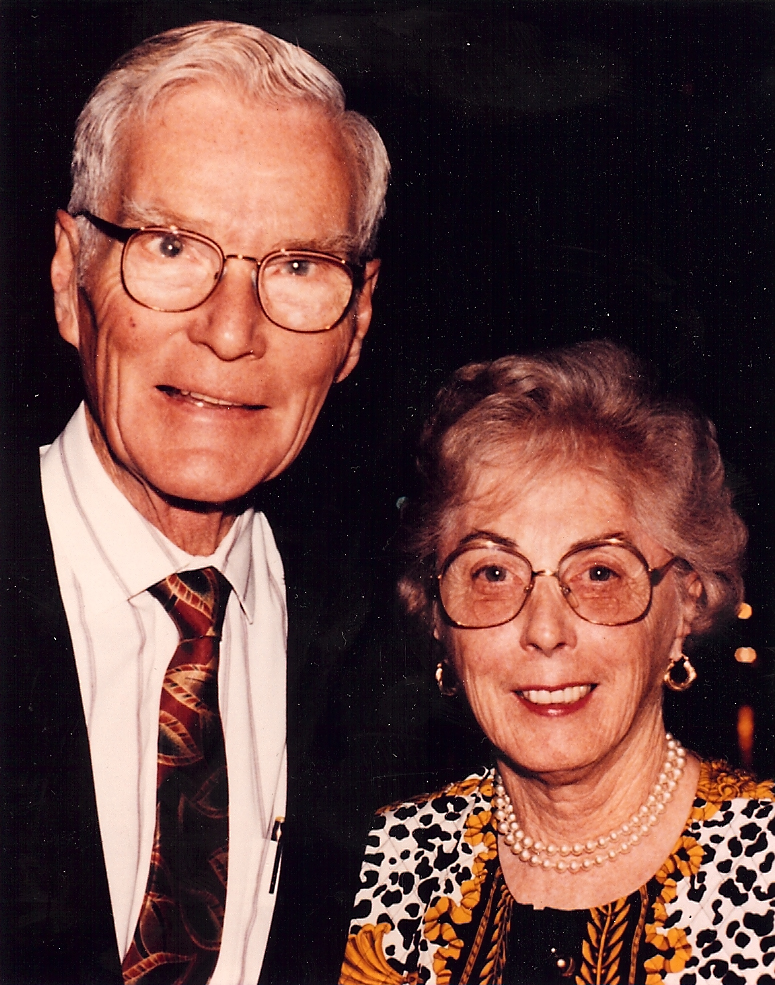
Jean wore many hats over the years. She was a registered medical record administrator and graduate of San Jose State University. Early in her career, she worked at San Jose Hospital Medical Center, in medical records, as well as the surgery and pathology departments. She also helped her brother, Dr. A.J. Monty, start the Santa Clara County Heart Association. At the request of the Santa Clara County Medical Society, she started the first medical personnel agency and medical secretarial service in San Jose. This led to her meeting her future husband David when she visited to enquire if he needed office help.
She later started a hospital transcription service and medical office consulting business, including establishing and managing a billing office for a group of physicians. New physicians contacted her and asked for help in starting their practices, including some of the first Vietnamese physicians in San Jose.
As part of her transcription service, she also wrote several handbooks which were published and used nationally. Her handbooks include “The Complete Handbook for Medical Secretaries and Assistants”, co-authored with Dr. Robert Lee Dennis, which got this rave review from Annals of Internal Medicine: “Retrieving this compendium from my secretarial-nurse staff evoked the response one might expect from Mama Bear when caught stealing one of her cubs.”
She was always extremely organized, and managed to have a successful career, run a busy household, and have an active social life. Her favorite pastimes were golf, ballroom dancing, and reading. She and her husband David traveled to many countries, and spent many happy hours dancing in each country that they visited, as well as at home.
Jean and David were very active volunteers with their daughter Christine’s Catholic schools. Jean organized student medical records for the schools to ensure everyone had gotten their childhood immunizations, in addition to providing help wherever needed. She and her husband became good and long-lasting friends with many of the high school band parents, who were ultimately dubbed “The Green Spaghetti Gang” after the fundraising spaghetti dinners. They chaperoned many of the high school band trips and had many a reunion dinner after all of their children had graduated.
In her retirement, she was a HICAP counselor for 16 years, helping seniors with their Medicare insurance questions and problems. She enjoyed sharing her medical insurance knowledge with seniors seeking advice.
She is predeceased by her loving husband David B. Doyle, MD, and her brothers, sisters, and parents. She is survived by her daughter Christine A. Doyle, MD, son-in-law Stephen Nelson, and several nieces and nephews.
Vaccines! Vaccines!
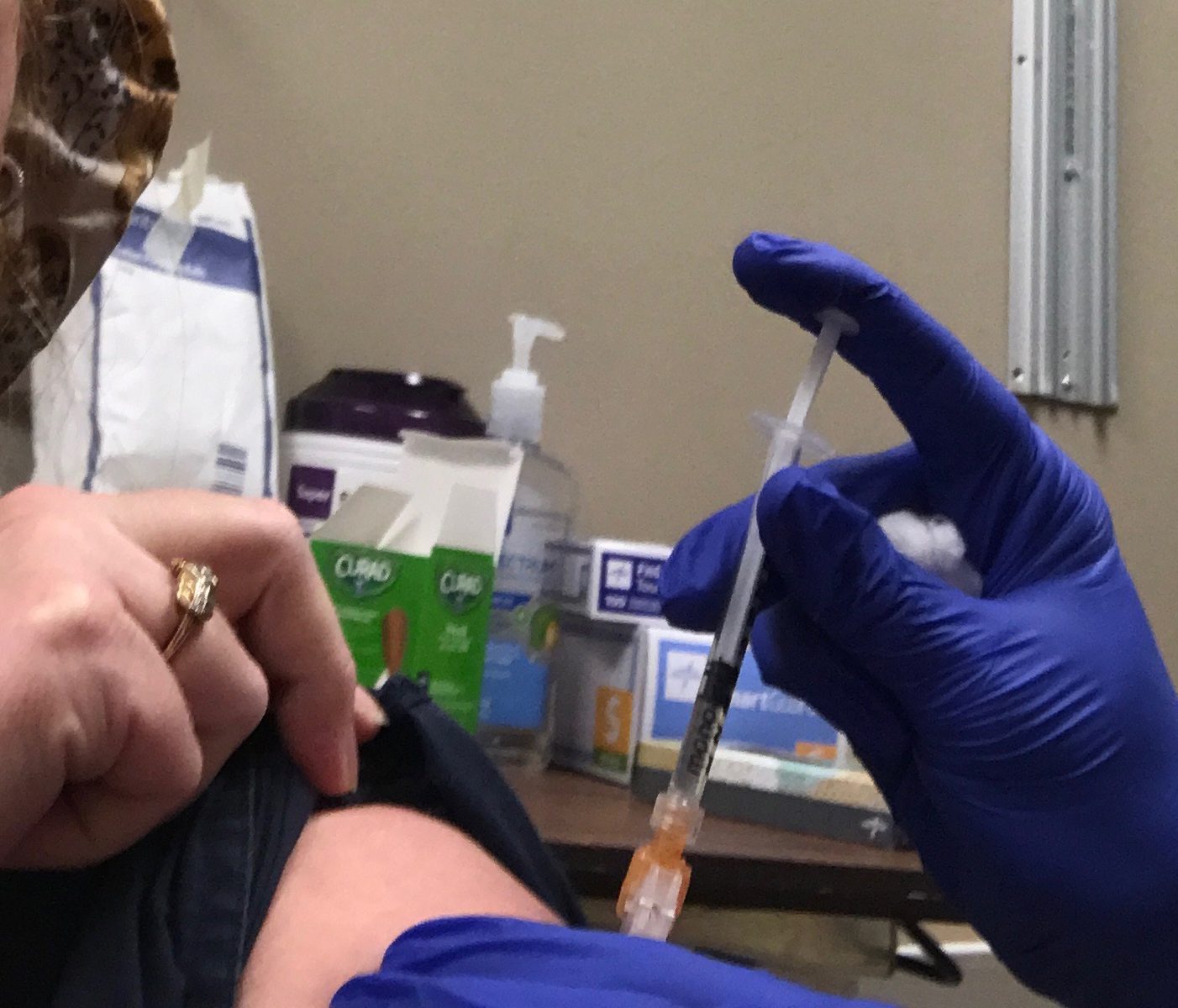
Just about everyone at the hospital was thrilled when we heard we would start giving vaccines to the staff before Christmas.
We started on December 17th, and had just over 350 people go through in 4 hours. We are now averaging well over 1000 doses per day within our hospital system and the county is now starting to branch out to other healthcare workers (physicians and their office staff), as well as our elderly and their caregivers. In just under 4 weeks, we have given well over 21,000 doses within our system and are giving second doses to those who were in the first week. This doesn’t include other facilities within Santa Clara County, like Stanford or Kaiser.
Do we know all of the fine details about the vaccines? Of course not. Just like this pandemic, what we know at the beginning is not what we will know 3 months or 6 months in the future, let alone years from now. We can’t say how long the vaccine will last yet (but at least 8 months). We don’t know whether folks will require booster vaccinations after the initial series.
Despite claims, this vaccine has gone through the exact same scrutiny that other vaccines have. We are doing the longer-term follow up, just like normal. What is different is the speed with which these vaccines were reviewed — on average, a new drug or vaccine sits in limbo for 2-3 years before the review is done. In addition, we had far more people in the studies than is typical. And we are continuing to do post-vaccination followups, not only with the study participants, but with everyone who is getting the vaccine. I expect in the end, both the Pfizer-BioNTech and Moderna vaccines will be the most studied vaccines we’ve ever had.
Yes, mRNA vaccines are new. But we have been studying them for a couple of decades, and they are being looked at as possible anti-cancer vaccines. Sounds like a SciFi novel, but reality gets closer to fiction every day. They don’t change your DNA, because they can’t. They do use your body’s “assembly line” to make the protein that stimulates the antibody creation. That’s the same thing that a virus does.
Most of the reactions that people are talking about are the same reactions your body has when fighting off any infection, whether bacterial or viral. Fever, chills, body aches. It means things are working. Not everyone has the same reaction, and not everyone will have the same reaction with both doses.
Please get your vaccine as soon as your are able to do so.
Boosting Bluetooth Range
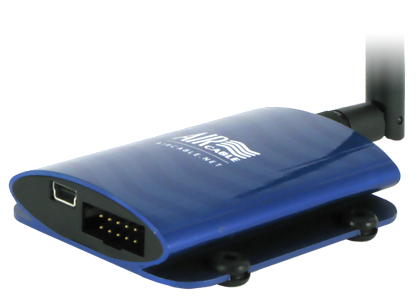
I got a Bose SoundSport headset earlier this year, and it’s quite nice when I’m trying to do work around the office… except for when I walk out of range. Unfortunately, the range issue was happening even within my 13’x13′ office.
So I asked for a bluetooth booster for the holidays, and I received an AIRcable Host XR5. Small device, with an adjustable antenna and a mini-USB cable. The experience has been a bit mixed.
The device arrived with no instructions. The website has no instructions. We could only find a few comments on the web: turn off the Bluetooth on the computer before plugging the device in, wait 5 minutes or so, download Xcode, etc. Not that helpful.
Although there is no specific Documentation or Technical Help page on their website, I was able to find this: https://aircable.co/blog/aircable-news-1/post/the-aircable-host-xr-on-a-mac-37 Even this blog post is a bit short on details, as key steps are buried in text instead of in the bullet list.
To make this work you need to:
- Make sure that you are using a wired keyboard and mouse.
- Ensure that Bluetooth shows on your menu bar at the top of your screen.
- Hold “shift” and “option” together and then click on the Bluetooth icon. This will bring up a variation of what you normally see, which includes the MAC address. Note down that MAC address, since you will need to see a change to verify that the device is working. The AIRcable MAC address will start with 00-25-BF-
- Turn off your Bluetooth.
- Choose DEBUG and remove all of your devices.
- Plug in the device to a *powered* USB port. The light will appear red.
- Turn Bluetooth back on. Wait about 5-10 seconds, and the icon will return and the light will change to a reddish-purple (not blue) and flickering/flashing.
- Pair your devices if they don’t come up automatically. Airpods and other Apple devices will not automatically appear, and will require manual re-pair.
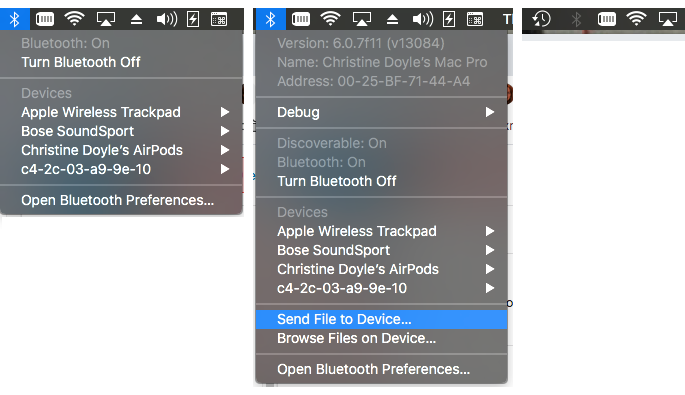
Once you get this setup, it may be unstable initially, and keep dropping. Be patient. Make sure that the antenna is upright (not flat on the table/surface). And it may drop periodically, even when sitting still at your desk. It’s unclear what makes that happen, but it will reconnect automatically.
The other issue with Bluetooth headphones is which codec is used as the default. You can check that by using “option” when clicking the Bluetooth icon. If you are sending audio to your headset, you should be able to click on it and see which codec is being used. If you’re using AAC or aptX, you will get better audio than using the SBC codec. For more details on how to optimize this, look here: https://www.macrumors.com/how-to/enable-aptx-aac-bluetooth-audio-codecs-macos/
